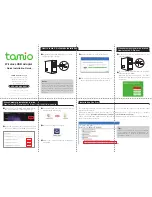
Operation
3-5
3360-A2-GB20-10
June 1996
Table 3-1
System LEDs
Name
Color
Meaning
OK
Green
Indicates the current operational state of the E1 NTU.
ON :
The E1 NTU is operational and has power.
OFF :
The E1 NTU is performing a power-up self-test or a system failure
has occurred.
BLINKING :
A software download is in progress.
FAIL
Yellow
Indicates a system failure or a self-test.
ON :
A device error/fault is detected or a reset has just occurred.
OFF :
No system failures are detected.
BLINKING :
A self-test is in progress.
TEST
Yellow
A system test is in progress.
ON :
A loopback or pattern test has been initiated either locally, by the
network, or externally.
OFF :
No tests are active.
Table 3-2
Network Interface LEDs
Name
Color
Meaning
SIG1
Green
Monitors the signal being received from the network.
ON :
A recoverable signal is being received from the network on loop 1.
OFF :
The signal cannot be recovered from the network on loop 1 (a Loss
of Signal condition exists).
SIG2
Green
Monitors the signal being received from the network.
ON :
A recoverable signal is being received from the network on loop 2.
OFF :
The signal cannot be recovered from the network on loop 2 (a Loss
of Signal condition exists).
OOF
Yellow
Monitors Out Of Frame (OOF) conditions on the received network signal.
ON :
At least one OOF was detected on the signal during the sampling
period.
OFF :
No OOFs were detected on the signal during the sampling period.
ALRM
Yellow
Indicates whether an alarm condition exists on the received network signal.
ON :
An alarm condition (LOS, LOF, EER, RAI, AIS, RMA, MFA) exists on
the received network signal. Use the Device Health and Status
command to determine the alarm type.
OFF :
No alarm condition exists on the network interface signal.
















































